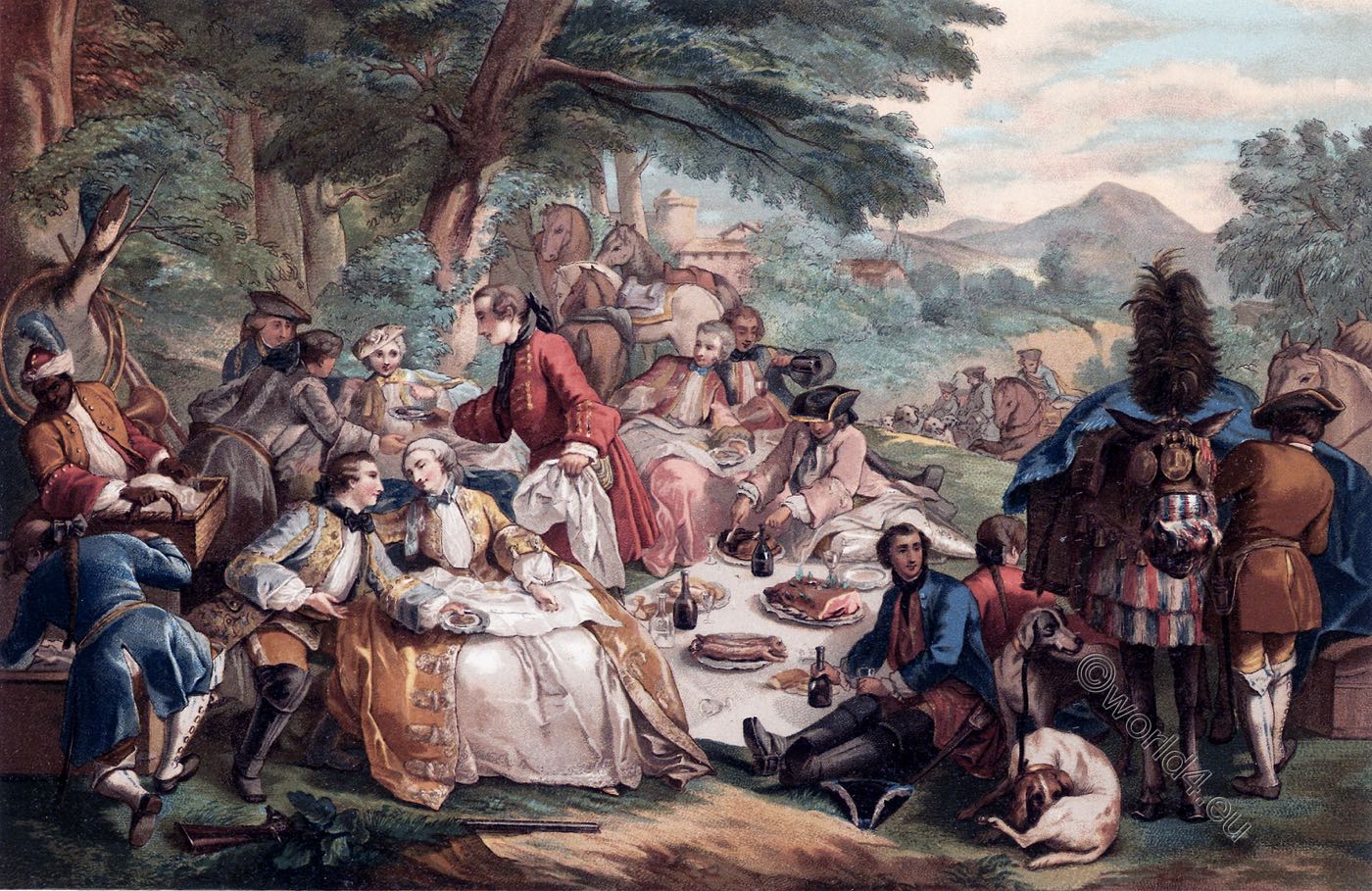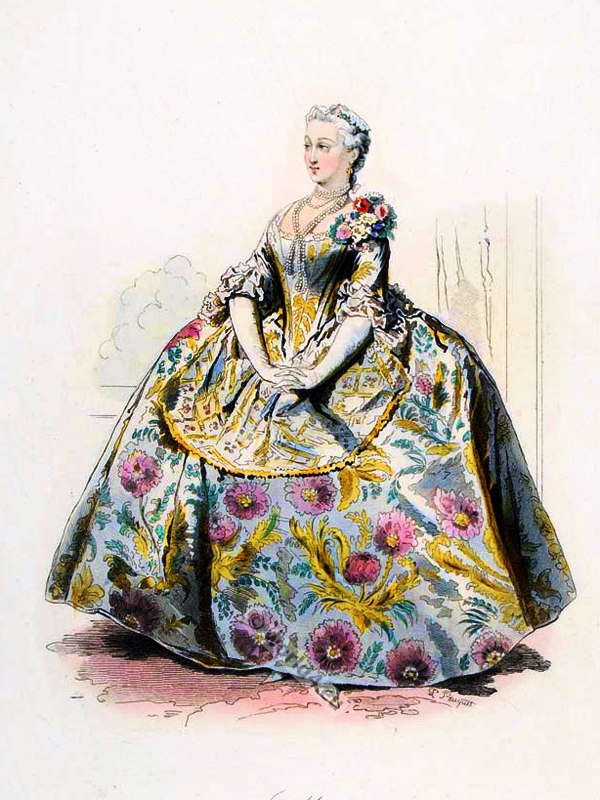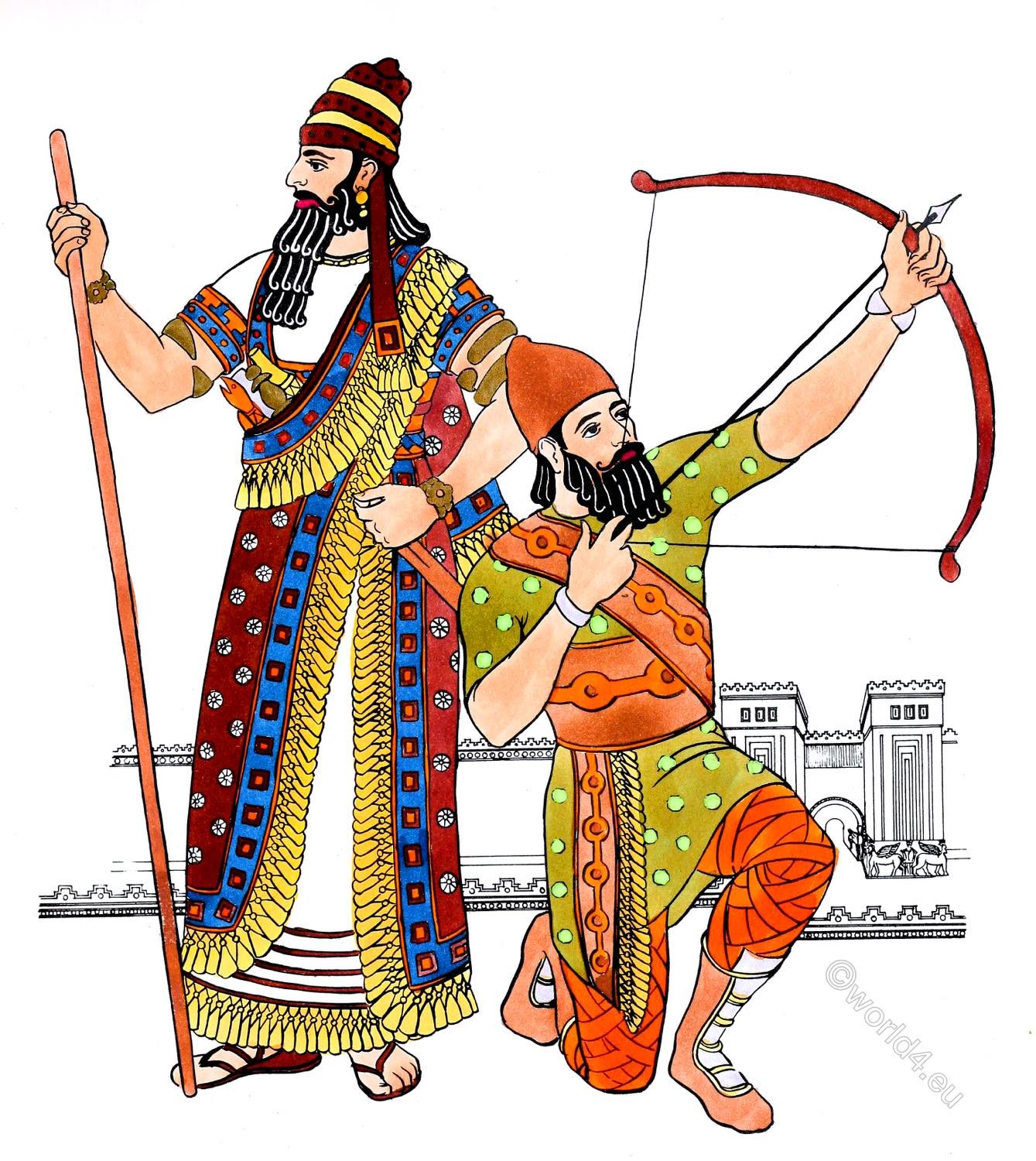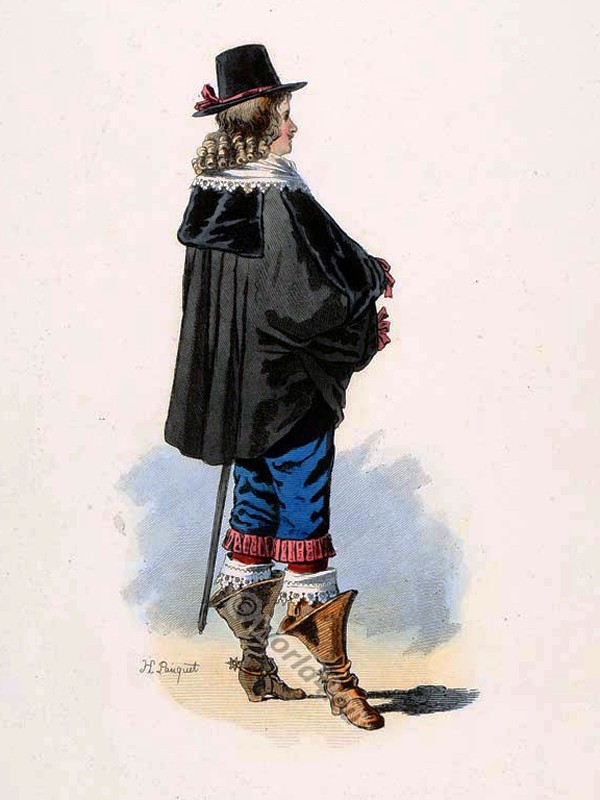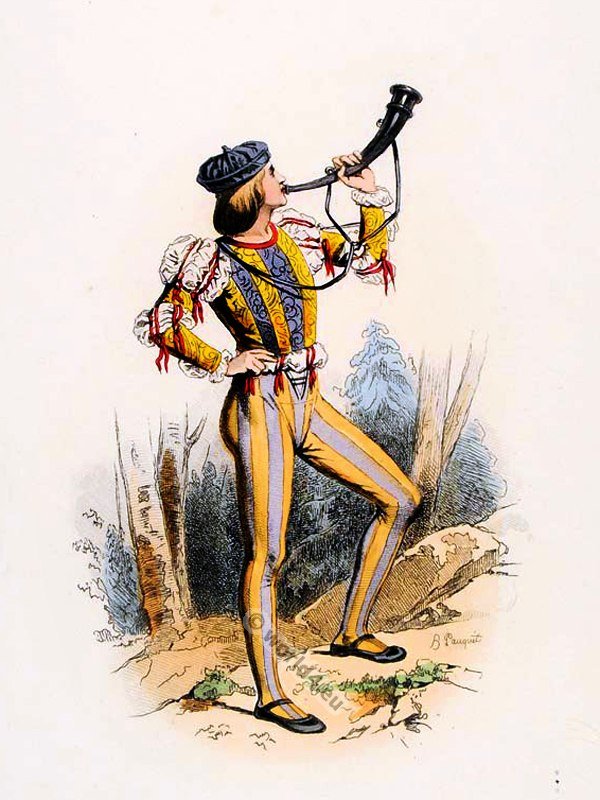
1 2 3 4 5 6
7 8 9 10
The characteristic features of the costume during the reign of Louis XIV.
France second half of the 17th century. Fashion of the baroque. Epoch of the government of Louis XIV. Preference for wigs. Costumes of the nobility.
FRANCE 17TH CENTURY. COSTUMES OF NOBILITY.
- No. 1 and 7. Louis XIV, King of France.
- No. 2. Louis de Bourbon, Count of Toulouse.
- Nos. 4 and 9. Louis, Dauphin of France.
- No. 6. The Princess of Savoy.
- No. 10, Philip, Duke of Orleans.
- No. 8. Countess Palatine Charlotte, his second wife.
The French clothing from the last decades of the XVIIth century laid the foundation for the modern costume. Until about 1670, the warlike costume had been decisive for the bourgeois costume as well. From 1655 onwards, however, the reform movement became so noticeable that the guild of the old doublet makers (pourpointiers) united with the tailors. The new costume consisted of two pieces of clothing worn on top of each other: the body gown and the waistcoat, which was almost as long and buttoned from top to bottom.
Then between about 1650 and 1670 one wore the Rhingrave trousers, a rather wide leg dress, which became tighter and tighter until it became the Pantalon and finally the culotte around 1680. They were fastened under the knees with a band, but the stockings were pulled over them.
The characteristic features of the costume in this period of Louis XIV’s reign are the size of the hat with its feather trimming, the circumference of the wig, the length of the bodice, the tie, the rich lace on the sleeves and the shoes with the high heels, the front leaves of which reached up to the ankles. The hat with its triangular brim was made of beaver, hare or rabbit hair, of ordinary and vicuna wool with the greatest care and intricacy.
Even more important was the wig industry; the names of its most important representatives have been handed down to posterity. Maurice Quentin invented the art of braiding the hair, sewing these braids onto a light fabric and in this way making whole hairstyles.
Around 1680 Ervais made lighter, but also more complicated wigs with the help of the crepe, which clung more tightly and more easily to the head. Then the great epoch of the allonge wig, the lion’s mane, the folio wig begins. By the end of the century, these large wigs, which used to weigh two pounds, only reached a weight of six ounces.
In their preference for the wigs, they went so far as to make them long enough to cover half of the body. In simultaneous images, they can be seen on the heads of the most frail old men and babies. They were also adopted by clergymen of all ranks. The wigs were perfumed, coiffed and powdered.
The finest were those called perruques de Bichon or perruques à la Moutonne, perruques d’Abbé, because they resembled the carefully combed hair of a Bolognese dog or a little lamb. The wigs were mostly made from women’s hair, which was bought in the country. The hair from Flanders was especially appreciated. The colour was very different. One had grey, reddish grey, agate white, milk white, yellow white, chestnut brown, light and dark brown, black, light black and deep black wigs.
For some time they also wore blond wigs, then black and finally powdered and white wigs. A large allonge wig of the finest quality cost about a thousand thalers. The hairstyle of the wigs was as different as the colour: the hair was made into curls, they were arranged into rings and rosettes and one or two ends were dropped over the shoulders at the front onto the chest. As the wig grows, the face remains clean-shaven.
The triangular hat was decorated with white or coloured feathers on the edges of the brim, which was bent upwards, which were longer or shorter depending on the fashion. Sometimes a bow or ribbon was added. Soon one of the tips was turned forward, soon a broadside.
The sword was carried more or less diagonally, often very low. The length of the great ribbons of the Order was also determined by the place where the sword was hung. Beside the sword one carried the stick with gold or ivory button and a bow with golden fringes (No. 7, 9).
The silk stockings, which used to be striped and patterned, have become monochrome. They were sewn together with golden threads. In 1684 they started making cotton stockings, boots were worn only in the field. For nesting the clothes, buttons were used instead of bows and ribbons. The former were only used on the hat, the shoulders and the cravatte (no. 2), but in the end they disappeared completely. Instead, the buttons and the buttonholes were given the greater luxury (strands).
Of the two women depicted on our table, one is in a hunting dress, the other in a ball costume. Both wear wigs. (After simultaneous fashion pictures, which were the forerunners of later fashion magazines).
Source: History of the costume in chronological development by Albert Charles Auguste Racinet. Edited by Adolf Rosenberg. Berlin 1888.
Related
Discover more from World4 Costume Culture History
Subscribe to get the latest posts sent to your email.

